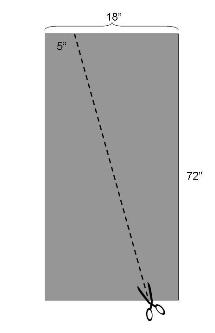Hammock Tubes
Hammock Tubes (aka HH Snakeskins and JRB Python Skins) are extremely simple to make, and they make setting up and packing up so quick and easy there's no reason NOT to take them.
Some are made from waterproof material...Python Skins and Snakeskins are both made from Silnylon. This protects the hammock and underquilt from water, so you can set up or pack up in the rain without getting your shelter wet. Titanium Hiker even made some with duct tape and garbage bags!
Not panty hose...
These tubes measure 2" at the small opening, 5.5" at the big opening, and ended up 57" long due to a sewing error. They weigh 1 oz for the pair.
Those are homemade skins on the tarp above it. |
